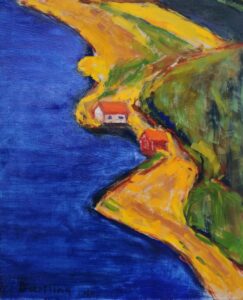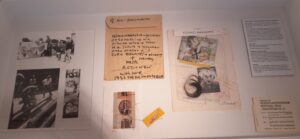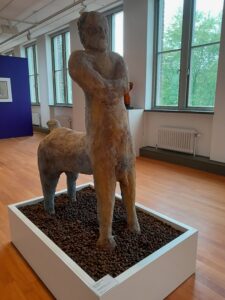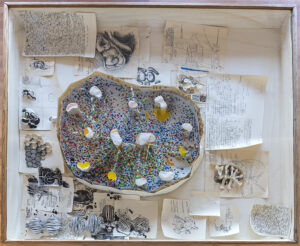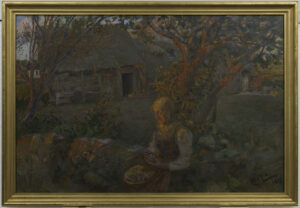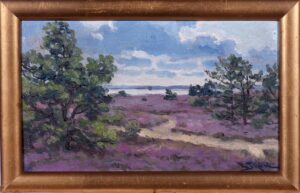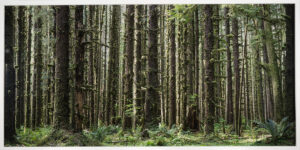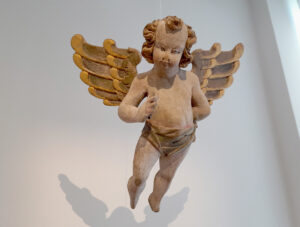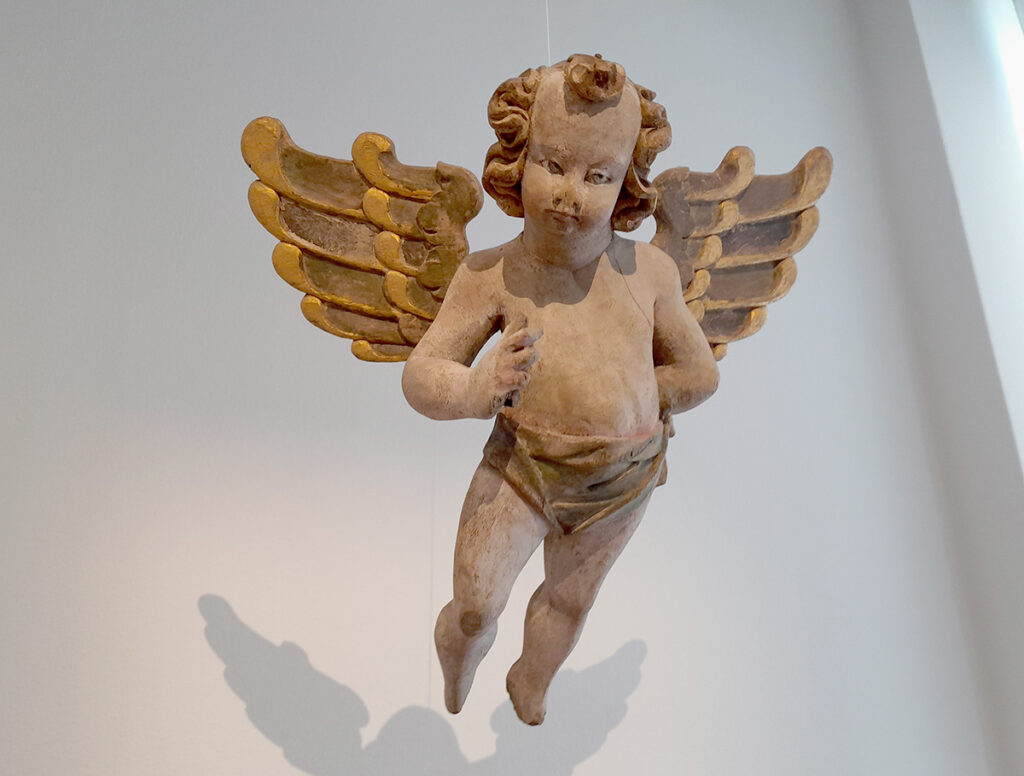Collecting – Angel, Per Bak Jensen and elf cross
The museum was inaugurated in 1933 and initially displayed cultural-historical objects from Halland. At that time, Christian faith was still a major part of the public consciousness. Thus, there was a strong focus on collecting and preserving objects from churches—such as baptismal fonts, altarpieces, and saintly figures. Erik Salvén, the museum’s first director, even had a chapel built at the top of the museum to provide these objects with an authentic setting. One example from that early collection is the painted wooden angel hanging in the corner on one short wall. It comes from Slättåkra Church in the municipality of Halmstad and dates back to the 18th century. The museum still holds all these ecclesiastical objects, though today the main focus is on collecting art. Here by the angel, we have gathered artworks with a clear religious theme.
The photograph Confessional by Danish artist Per Bak Jensen shows part of a Catholic confessional booth—a dark wooden brown structure with a purple curtain. Inside, the priest sits behind the curtain, while the penitent kneels on either of the outer sides of the booth. The confession is given through a screen. Per Bak Jensen is best known for his often atmospherically charged images of landscapes and industrial environments. Beyond the documentary aspect, he seeks to portray another dimension of reality—to explore the hidden mysteries of our existence. In that sense, this photograph, while depicting a specifically Catholic piece of church furniture, can also be seen as a universal symbol of the longing for spiritual connection.
In a small display case next to the photo lies a small, round silver amulet, just over 4 cm in diameter. It is an ellakors, or “elf cross.” These amulets were stamped with an equal-armed cross, a so-called sun cross. This particular one bears a simple prayer inscribed on it: Jesus, Son of the Lord, Help Me. Other such crosses may also include Christograms or the wearer’s initials. The amulet was worn around the neck, close to the body and hidden under clothing. They were used in southern Sweden and Denmark, mainly during the 18th and 19th centuries. Elf crosses were believed to protect against illnesses thought to be caused by Ellen, a water spirit akin to elves, who were believed to bring about various ailments. Their evil breath, known as elf-blast, was said to cause rashes and skin conditions. Other afflictions included elvabröt, which caused severe pain, or elleskott, which was believed to affect the mind. For the ellakors to be effective, it had to be made and given to its wearer in accordance with specific rituals. The silver had to be begged for from the community following certain rules, and the blacksmith could not accept payment. The elf cross could not be sold—it was to follow its bearer to the grave.
